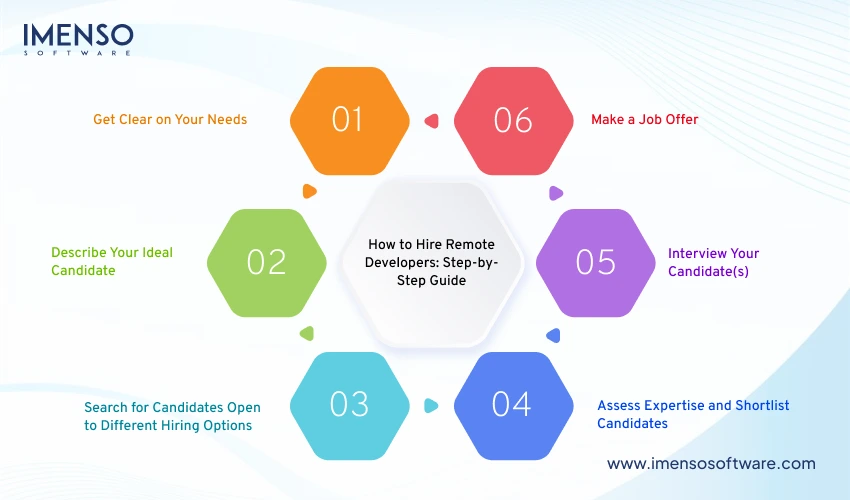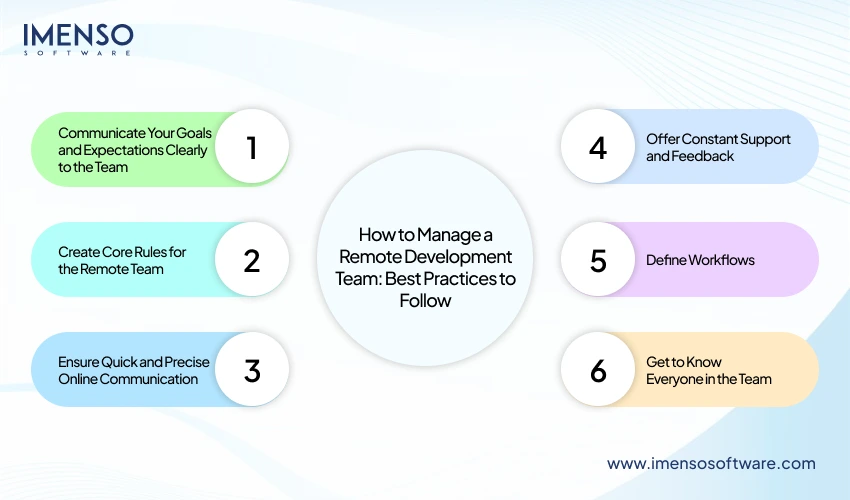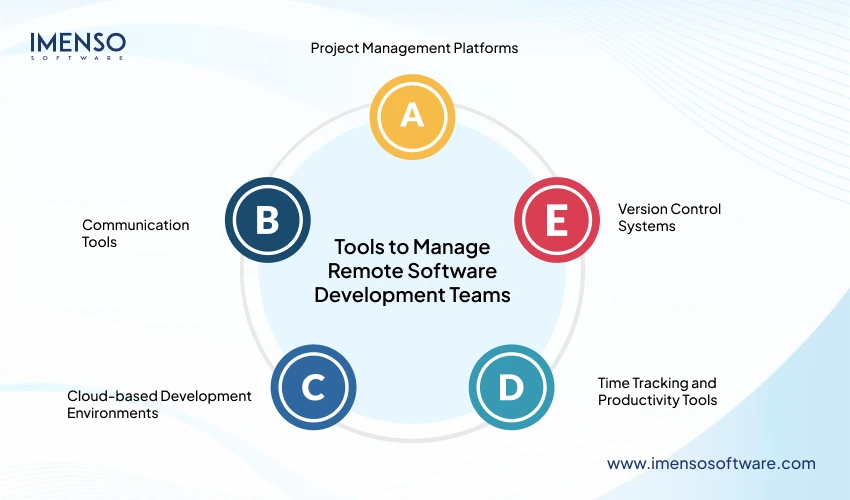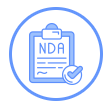The Rise of Remote Dedicated Developers: How to Build a Global Tech Team

Two decades ago, Watts S. Humphrey, the father of quality in software, made a trendy statement.
“Every business is a software business.”
Humphrey’s view was certainly prescient. Fast forward to the present, Satya Nadella, CEO of Microsoft repeats the same message.
“All companies are software companies.”
Evidently, businesses in various sectors need efficient software solutions. To develop them, they need expert developers. A study reveals that more employers today want to tap into diverse talent pools. So, they are willing to enable remote work across national borders.
Remote developers enhance a startup’s productivity in various ways. With more tech startups coming up, the business landscape has become highly competitive. Building a remote team of developers is the way forward.
Let’s find out how to identify and hire the right talent for your startup’s success.
What Is a Remote Development Team?
Often, the term remote team is used interchangeably with virtual team. The two differ from each other. A remote team consists of IT specialists from various places working on a project. These teams operate from different time zones. People as a whole have diverse skill sets. They use technology to collaborate. These teams use special tools for remote work. They use distinct strategies to create and maintain software.
But people in a remote team can all be from the same country or city, too. What they do differently is work from home without going to the office.
A remote team offers a quicker time to market for MVP products. But building and working with them ain’t easy. It’s not impossible, though. Various startups globally have successfully tapped into the talent of such teams. In the sections below, we’ll give you actionable advice on how to do the same.
“Try never to be the smartest person in the room. And if you are, I suggest you invite smarter people … or find a different room..” – Michael Dell, Founder of Dell Technologies.
Useful: Offshore Software Development Company in India
How to Build a Remote Software Development Team
Creating a global tech team takes time. Knowing the right steps will help you do so effectively and quickly.
How to Hire Remote Developers: Step-by-Step Guide

Get Clear on Your Needs
You need to know why you want remote developers. Clearly define your project needs and requests. Create long-term and short-term goals and sort them out. More specifically, be clear about the following:
- Your tech stack
- Programming languages
- Development approaches
All this will help you discover people who align with your needs.
Describe Your Ideal Candidate
To hire dedicated developers, creating an ideal candidate profile is a must. Be clear about your expectations. Set your search parameters. Dig deeper into what you want and need. Then, create a detailed portrait of your candidate. This makes your search more targeted. Some critical points to include here are:
- Your business name
- Critical project needs
- Years of experience
- Tech expertise
- Job profile
- Technical requirements
Search for Candidates Open to Different Hiring Options
Now you search for the candidates. We recommend using remote job portals. Freelance job sites are also a good option. Portals like Fiverr and Upwork are quite popular. You can also make use of professional networks like LinkedIn. There are developer communities with many skilled IT specialists as well. Stack Overflow and GitHub are two of them. Create an ad and post it on these platforms.
Besides job postings on these portals, some other routes you can take are:
- Ask for a referral
- Attend tech conferences
- Use social searching for talents
Assess Expertise and Shortlist Candidates
To get the best hire for your remote developer jobs, it’s critical to assess their portfolio. It helps you with learning about their expertise. Look for similar projects they have done. Screen their past work for quality and technical proficiency.
If they have a profile on a developer community, review it. This helps with assessing their skills and experience. Screen desired applicants through special tests. They should evaluate their technical prowess and ability to communicate. It will also inform you if they are a good cultural fit for your startup.
Interview Your Candidate(s)
Once shortlisting is over, interview the person. Interview them based on critical parameters. Ask them questions that help you assess their problem-solving capacity. Also, add questions about the specific tech stack for your projects.
Below are some key questions to ask:
- What tools for collaboration and remote work do you use?
- How do you manage conflicts in remote work? Describe a situation where you’ve resolved a conflict smoothly.
- Do you use any special tactics to stay focused?
- What working hours suit you the most?
- How would you rate yourself in written communication?
- Can you work with minimum supervision?
- Do you feel comfortable working with people whom you don’t meet daily?
- How much is your remote work experience?
- How do you manage your routine schedule?
- What is your workspace like at home?
- How often do you need to prioritize your own tasks?
- How do you maintain a work-life balance?
- What are the major pros and cons of remote work for you?
Make a Job Offer
Discuss all terms of work with the candidate. Clearly set your expectations and project scope. You must also be clear about payment and your budget. When you reach a position that suits both, make a job offer.
How to Manage a Remote Development Team: Best Practices to Follow

The task of hiring dedicated developers is over. To truly reap its benefits, you must know how to manage remote teams. Below are some proven ways that will help you do so.
Communicate Your Goals and Expectations Clearly to the Team
Your startup has certain expectations. Your job is to deploy your remote team to accomplish them. Some key things that you should convey at the start are:
- The team’s availability
- Hours of work
- Compliance with timelines
- Planned meetings
Create Core Rules for the Remote Team
Lay out the basic rules that everyone will need to adhere to. Also, describe your project goals and description. Share the standard guidelines that everyone in your organization must follow.
It’s critical to describe your project’s guidelines to the team. This ensures efficiency and productivity at work. Don’t forget to communicate the rules that are crucial for remote work openly.
Ensure Quick and Precise Online Communication
You can hire dedicated developers with the best skills. But in a remote setup, communication often goes for a toss. Don’t let it be so in your case. Effective communication is critical to connect teams. Ensure quick and precise communications from the start. It will help everyone to be clear about their tasks. No one will delay anything simply because they haven’t received a response from the relevant person.
Offer Constant Support and Feedback
Out of sight is out of mind. Don’t let this adage become true in your case. Issues will always arise when working with a remote team. These can be related to a person, project, or process. As a manager, you should take the lead in resolving it through support. Doing so does more than help solve an issue. It strengthens your bond with your team. You will also be able to manage people more efficiently.
Define Workflows
When you hire a dedicated developer in-house, they can reach out to their teammates anytime. That isn’t the case with a remote team. So, it is critical to define workflows. Create standard operating procedures for every task. This ensures that there is no confusion regarding any job function. It also reduces the reliance of team members on each other. Thus, all work gets done productively and efficiently.
Get to Know Everyone in the Team
Whether you hire programmers in India or elsewhere, knowing everyone on the team is a must. This is easier with an in-house team. With a remote team, you need to put in more effort. Knowing everyone is critical for your project. It helps you learn about each individual’s strengths and shortcomings. You also uncover their unique persona. This information helps you assign roles that better align with each one’s skills and expertise.
Must Read: How to Hire Software Developers in India: A Complete Guide
Tools to Manage Remote Software Development Teams

Using the right tech stack is critical after hiring dedicated developers. Efficient collaboration leads to success. Below is a list of tools that enable smooth interaction in a remote team.
Project Management Platforms
These tools make it easier to distribute work. You can track progress to ensure everything is moving as expected. Project management tools break up huge projects into manageable tasks. They help the team deliver work within the timeline.
Best Project Management Tools for Remote Teams
- Trello
- Asana
- Jira
Communication Tools
Communication tools are critical for cross-team collaboration in real-time. Your team members work from different places. Different people are part of different teams. These tools help with planning meetings and discussions. They ensure that every virtual team member is involved.
Top Communication Tools for Remote Teams
- Slack
- Microsoft Teams
- Zoom
Version Control Systems
This tech stack is a must for those working on the same code. Version Control Systems let you track all changes in the code. With their aid, you can also roll back to a prior version, if needed. Thus, they eliminate any clashes that might arise in this situation.
Popular Version Control Systems
- GitHub
- GitLab
- Bitbucket
Cloud-based Development Environments
A cloud development setup allows a remote team to code, test, and run the code regardless of the startup’s area of operation. They ensure that everyone is on the same part of the project when working remotely.
The Best Cloud Development Environments for Remote Teams
- AWS Cloud9
- Codeanywhere
- GitPod
Time Tracking and Productivity Tools
These tools record the working time of the team members. They help you track their productivity. The information from these tools is helpful in uncovering the right tasks for every member.
Top Tools for Time Tracking and Productivity for Remote Teams
- Toggl
- Clockify
- RescueTime
Creating a Remote Development Team That Delivers
Hiring dedicated developers and managing them remotely isn’t complex. This guide will help you create a team that’s ready to tackle any challenge. Remote teams are flexible and scalable. They enable startups to become more competitive in an expanding digital arena.
If you are looking for remote developers to create custom software, reach out to Imenso Software. Our dedicated developers create custom software that enhances innovation and drives your success forward.
Related: How Dedicated Developers Can Accelerate Your Digital Transformation in 2025?
Frequently Asked Questions
Who Are Dedicated Developers?
These IT specialists can be placed between part-time and full-time staff of a company. Startups hire dedicated developers for a specific project. The project is usually long-term. Throughout its duration, these IT specialists work as full-time staff.
How much does it cost to hire dedicated developers?
The cost varies from one startup to another. It can range between $15 – $150 per hour. The cost mainly depends on three factors. These are the place, experience, and the project’s scope. A junior IT specialist can cost $1,800. A senior developer will cost not least $5,000.
What is the salary of an app developer remotely?
The salary of a remote app developer is usually $97,325/year. This depends on experience, place, and the specific organization. Some startups pay hourly. A common hourly rate is $50/hour in the U.S.
What is the best development team size?
The ideal team size is between 3-9 members. It is seen that a team of 7 members operates most efficiently. However, this is not to say that a team bigger or smaller than this won’t perform well. The right size for a team depends on the unique project requirements.
Want more information about our services?
Similar Posts

Top 10 User Design Strategies Of 2021 To Reduce Bounce Rate
If we have a look at the past decade, we can see how far the digital marketing domain has come. Every single business is making the best use of this technology in boosting its growth. In a field which is expanding at a high rate, it becomes important to keep a check on the upcoming […]...

Imenso Software Succeeds by Offering Client-Focused Services: GoodFirms
Having the required expertise and experience to develop and deploy customer-oriented solutions endows Imenso Software as one of India’s top web development companies at GoodFirms....

8 UX Trends You Can’t Ignore in 2021
2020 has been an unusual year for all of us. After the coronavirus pandemic, the physical human interactions have changed, but the digital interfaces have altered. ...









